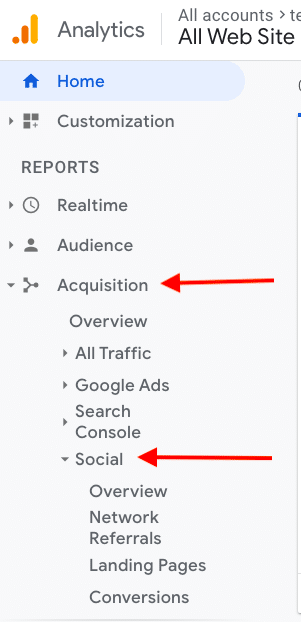
Marketing word of mouth is an excellent way to generate lots free publicity. Your customers will most likely talk about you and your products. Remember that people are more inclined to trust a friend than a stranger's recommendation. To maximize the power of word-of-mouth, there are many factors you need to consider when developing your inbound marketing strategy. These factors include content creation, product marketing, and social media marketing.
Effectiveness
While many people think that word of mouth is simply a way of generating sales, this strategy is surprisingly effective in a variety of ways. Word of mouth can boost a consumer's likelihood of choosing a product by up to 20%. As word of mouth spreads through social media and online interactions, it becomes more powerful and easier to remember. Word of mouth marketing can be improved and measured, but it shouldn't be ignored.
Although marketers have long recognized the impact of word of mouth marketing, the effectiveness of this strategy is largely dependent on how well it is executed. The science behind marketing messages' impact can be revealed through word-of-mouth equity measurement. The iPhone had a 10 per cent share of word -of-mouth volume in Germany as compared to its leader, a product made in other countries. iPhone messages were five-fold more powerful than the average.

Subconscious triggers
External triggers are often used by brands in marketing. They assume that people will respond to external stimuli. Although external triggers have been proven to be effective, research shows that marketers can also use internal cues in marketing to target a narrower audience. These are some examples of how inner triggers work. An example of an internal trigger is the brand name and a friend’s recommendation. These can both influence purchase decisions. Although the product may not be immediately associated, the name of the product can be related to a particular experience or event.
Marketers need to consider both internal as well as external triggers when designing ads. External triggers are based only on the surface information of what the user is looking for. Internal triggers tap into the motivations of the individual, but they don't rely on visual cues. A brand can build a deeper connection with their target audience and increase conversions by communicating their emotions. The following example demonstrates the importance of using subconscious triggers in marketing word of mouth.
Inbound marketing strategies
For word of mouth marketing to work, it is important to understand the perspective of your buyer. These factors will help you build relationships with your buyer and provide useful content. These tactics can be combined with your outbound advertising campaign to attract more customers. You may also need to consider outbound marketing strategies in order to complement your inbound marketing efforts. Content that people enjoy reading is the key to word-of-mouth marketing success. This content will increase your sales, while building trust.
Blogging is the first step of your content strategy. Blogging is an important part of your inbound strategy. It can lead to a series or messages on social media based around one blog post. The content should be informative, and help your company shine. Ideally, your content strategy will help other companies in the process. Once your content strategy is in place, you can then move on to other aspects of your marketing strategy.

Amplified word–of–mouth marketing
Amplified mouth of mouth marketing can help you reach more customers for a lower advertising budget. This is different from traditional advertising. It does not limit you to traditional marketing channels. Your campaign can be made more cost-effective by amplified word-of mouth marketing. This strategy is especially effective when it leverages the power of user generated content. Brands can build trust by using this content. Potential customers can be influenced by the content.
Amplified word-of-mouth marketing leverages social media influencers for brand recognition and sales growth. Influencers are people with large audiences who can increase brand awareness. This is a great opportunity to increase your brand’s popularity. However, it is important for you to realize that the power of influencers on social media is not something you can do without. It takes a budget and partnership with influencers to get the best results.
FAQ
Why do I need a Content Marketing Strategy? Why should I not only send out emails, but also post social media updates.
Two main reasons you might choose to ignore a Content Marketing Strategy.
-
It might seem that social media posts and email marketing are sufficient to get people talking.
-
It's possible to assume that sharing this content via social media and email marketing is not practical.
Both of these assumptions are wrong.
Email marketing and social media posts can be great ways to communicate with customers and prospects. But they don't suffice by themselves.
An email campaign alone won't help you reach your goals. Your email campaign should be part a larger strategy. Your goals will not be achieved by social media posts. They need to be part of an overall plan.
A Content Marketing Strategy is the key to this success. This strategy will help you manage the content creation process.
As a result, your time will be more focused on other aspects of your business such as increasing your conversion rates and growing your audience.
Even though Content Marketing Strategy has many benefits, it doesn’t make it easy.
However, a strategy is a key to success.
Is Content Marketing Strategy right?
If you are clear on what you want, then a Content Marketing Strategy can work for you.
However, if you need some guidance before getting started, here are a few questions to ask yourself:
Do my company need to communicate a particular message? Or should I create content that appeals to a wider audience?
Do I want my efforts to convert visitors into buyers or generate leads?
Are you trying to promote one or multiple products?
Am I interested in reaching people outside of my industry?
If the answer is "yes" to any question, then a Content Marketing Strategy is what you are looking for.
What is strategic content marketing?
Content Marketing is about creating and sharing valuable content across multiple channels. It's about giving people what it is they want. This understanding is key to the success of any company.
Strategic Content marketing ensures that you give them what they need at exactly the right moment.
To understand people's interests and their thinking, you must first get to know them. Then you have to create high-quality content that answers their questions and solves their problems. This builds trust, loyalty, and ensures that you are always in their minds when they need your product/service.
Statistics
- An example of an overarching goal could be: "In 2022, we want to achieve a 20% increase in revenue created by organic content and generate 15,000 MQLs with a budget of $30,000." (semrush.com)
- We found that 40% of businesses don't have a documented strategy yet. (semrush.com)
- According to our research, 65% of companies with very successful content marketing in 2021 ran content audits at least twice a year. (semrush.com)
- Progress indicators (0–100%) allow each team member to see how attainable each goal is and understand what remains to be accomplished. (semrush.com)
- According to our research, brand awareness, attracting traffic, and generating leads remain the key content marketing goals in 2022. (semrush.com)
- Seventy-two percent business to business (B2B) (mailchimp.com)
- According to research compiled by Coschedule: Companies that publish 16+ blog posts a month get as much as 3.5x as much traffic as those that publish 0-4 posts a month. (criteo.com)
- In fact, would pay more for a better customer experience, and 86% of B2B buyers would pay more. (neilpatel.com)
External Links
How To
How can I create a content market strategy?
Understanding what content you want to create is the first step. Once you have this information, it is time to begin creating content. This could include creating an editorial calendar or planning where these pieces will come. Content should always have a purpose. It doesn’t matter whether you are writing blog posts, social media updates or e-books. They all need to serve one purpose.
Once you decide what content type you want to produce it's time to discover who your target market really is. So who are they interested in, and why would they care about whatever you're offering them?
Next, identify your target market and find ways to connect with them. However, social media platforms can be an effective way to communicate with people. There are also other options like videos, podcasts or webinars.
Once you have decided how you will communicate to your market, the next step in your content creation process is to identify what topics and types you want. This will help you to understand why you are writing the content. What problem does this solve? Are they satisfied? Do they think it will make their lives more easy?
Once you have an idea of the content you are writing, you can start to think about what you want to share. What do you want? On current events? Which products and services are you most interested in? The answer to that question determines your focus.
Finally, after answering all those questions, it's the right time to combine everything in one package.
You want to ensure that every piece of content you create serves its purpose. You don't want to waste anyone's time and energy, so you must build quality into every aspect of your content.
Don't forget that a great content marketing strategy has many moving parts.